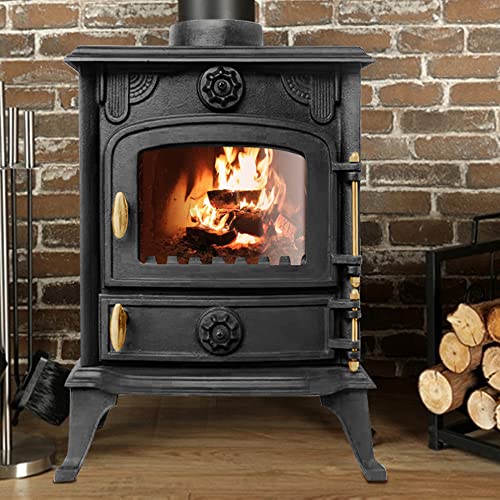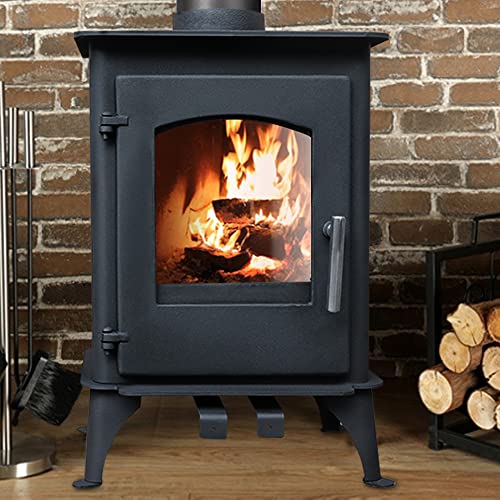In the realm of home heating solutions, the modern multifuel 5kW eco design cast iron stove stands out for its blend of efficiency, versatility, and style. This guide delves into the numerous advantages of multifunctional stoves, the eco-design regulations, and how to select the perfect model for your home.
What Is a Multifuel Stove?
A multifuel stove is a type of heating appliance that can burn a variety of solid fuels, including wood, coal, and biomass. This flexibility allows homeowners to choose the most cost-effective or environmentally friendly fuel available.
Key Features of the Modern Multifuel 5kW Eco Design Cast Iron Stove
-
Eco Design Compliance: Modern multifuel stoves, especially those adhering to the latest Eco Design regulations, are designed to burn fuel more efficiently, resulting in lower emissions of harmful pollutants.
-
Efficiency Ratings: Most 5kW stoves boast an efficiency rating of over 80%, making them not only eco-friendly but also cost-effective in the long run.
-
Cast Iron Construction: Cast iron is known for its durability and excellent heat retention properties. A cast iron stove can provide warmth long after the fire has died down.
-
Stylish Designs: Available in various patterns and colors, these stoves can complement any interior design, from modern to rustic.
-
Versatility in Fuel Types: Homeowners can choose different fuels based on availability, allowing for a more tailored heating solution.
Benefits of Using a 5kW Multifuel Stove
Choosing a 5kW multifuel stove comes with several advantages, including but not limited to:
-
Cost Efficiency: Opting for local and sustainable fuels can reduce heating costs significantly.
-
Environmental Impact: Modern stoves are designed to emit less CO2 compared to traditional models.
-
Ease of Use: Many models feature user-friendly controls for adjustments, making them simple to operate.
-
Independence from Electricity: In the event of a power outage, a multifuel stove can still provide essential heating.
Considerations Before Purchasing
Before investing in a multifuel stove, it’s essential to consider various factors:
-
Room Size: A 5kW model is suitable for most average-sized rooms. Choosing a stove with the appropriate power output ensures efficient heating without wasting fuel.
-
Flue Requirements: Always check the flue requirements, as models may have specific installation guidelines.
-
Regulations: Familiarize yourself with local regulations and ensure your stove complies with the necessary legal standards.
-
Fuel Availability: Consider the types of fuel you can easily access in your area to ensure your stove’s flexibility is beneficial.
Maintenance Tips for Your Cast Iron Stove
Proper maintenance will not only extend the life of your modern multifuel stove but also enhance its efficiency. Here are some maintenance tips:
-
Clear the Ashes Regularly: Remove ashes regularly to maintain airflow and improve burning efficiency.
-
Clean the Glass: Regularly clean the glass door to ensure maximum visibility of the fire and enhance aesthetic appeal.
-
Inspect for Cracks: Periodically check for any cracks in the cast iron body. Repairing any damage promptly will prevent further deterioration.
-
Check the Flue: Ensure the flue is free from blockages to maintain efficient ventilation.
Frequently Asked Questions (FAQs)
1. How do I ensure my multifuel stove is eco-friendly?
To ensure your stove is eco-friendly, look for models that are compliant with Eco Design regulations. These stoves are built to minimize emissions while maximizing efficiency.
2. Can I burn any type of wood?
Not all wood is created equal. For optimal performance, use seasoned, dry wood that has been properly stored. Burning unseasoned wood can increase smoke and reduce efficiency.
3. How often should I service my stove?
Regular maintenance is recommended at least once a year, particularly before the heating season begins. This ensures that your stove operates efficiently and safely.
4. What type of fuel is best for a 5kW multifuel stove?
The best fuel depends on availability and cost. Many users prefer seasoned wood for its efficiency, while others may choose smokeless coal for convenience.
The modern multifuel 5kW eco design cast iron stove represents an ideal solution for homeowners seeking an efficient, versatile, and aesthetically pleasing heating option. With the ability to burn various types of solid fuels and a commitment to environmental sustainability, these stoves are a worthy investment for those looking to enhance their home’s warmth. When considering a multifuel stove, it is crucial to weigh the benefits, conduct thorough research, and perform regular maintenance to ensure years of reliable service.
Summary Table of Benefits
| Feature | Description |
|---|---|
| Eco-Friendly | Complies with modern emission regulations |
| High Efficiency | Over 80% efficiency rating |
| Durable Material | Cast iron ensures heat retention |
| Design Options | Available in multiple styles and colors |
| Fuel Flexibility | Capable of burning wood, coal, and biomass |
Investing in a modern multifuel 5kW eco design cast iron stove is not only a practical choice for heating but also an environmentally responsible decision that contributes to a sustainable future.






